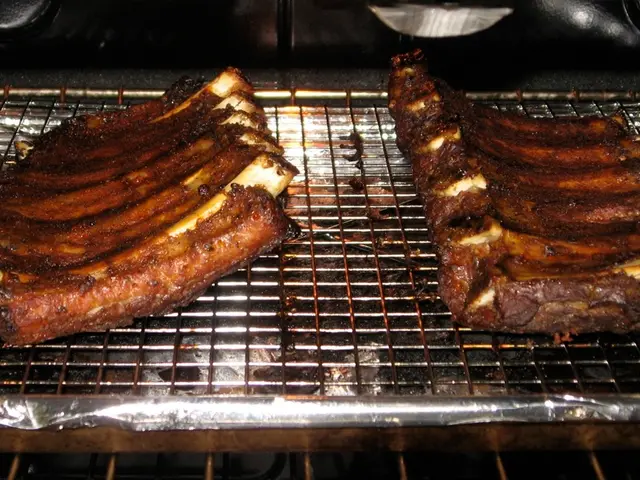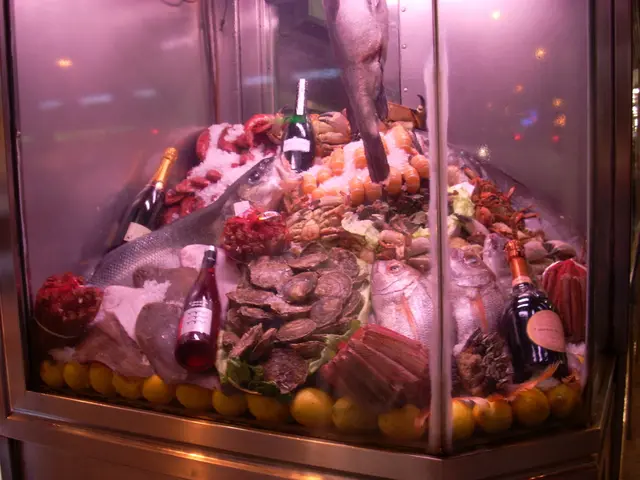A broiler, in simple terms, is a type of chicken that's raised specifically for its meat, which is typically young and very tender. These chickens are reared quickly to reach maturity at a young age, resulting in a more expeditious production cycle.
In East Germany, the Broiler – a term used for specially bred and fattened chicken, often referred to as "Grill Chicken" – was a staple of the socialist food culture. Although the DDR had its own breeding and fattening programs, the genetic basis of many lines came from other countries, particularly the USA and western European states.
Key Countries Involved
United States (USA)
The USA led the world in the development of hybrid chickens for mass production. US-American hybrid lines, such as the White Rock or Cornish, were also popular in the DDR and were used for breeding and fattening programs. The DDR regularly imported parent stock, brooders, or genetics from the USA to continuously improve its breeding.
United Kingdom
British poultry – particularly light and medium-weight hybrid chickens – were also used as a foundation for breeding programs. British breeding farms often collaborated with US companies and supplied chicken breeds that were particularly suitable for intensive fattening.
Netherlands
Dutch specialised breeding farms were among the first outside the USA to successfully produce modern hybrid chickens. They exported brooders and breeding stock to the DDR.
France
French poultry companies, such as SASSO (founded in 1972, but already active in the 1960s and 70s), also supplied genetics and expertise for poultry farming. The DDR used their lines to achieve high growth rates and meat quality.
DDR and Eastern Europe
The DDR built its own specialised breeding farms (e.g. in Rottenbach, Zinnowitz, Gädebehn) and developed its own hybrid lines to become independent of imports. Eastern Bloc countries like the Soviet Union and Hungary also cooperated in poultry farming, primarily for the exchange of experiences and products. The leading genetics, however, came undeniably from the West.
Conclusion
The breeding of DDR broilers was an international success story: The DDR mainly relied on the USA and Western Europe (Great Britain, Netherlands, France) as a genetic source, but built its own poultry farming and breeding industry. The aim was to supply the population with affordable, tasty broiler meat – a goal that was largely achieved until the end of the DDR, despite the dependence on imports of live animals and genetics from the "capitalist world".
Interesting: The DDR broiler became so popular that the term became a German-German speciality, gaining acceptance in the West – most often as a synonym for "Grill Chicken".
Grilling broilers enhances their flavour and aroma. They are grilled in an oven for a specific duration to achieve the desired taste and texture. Broilers are chickens that have undergone a fattening period of about six to eight weeks. From a nutritional standpoint, broiler meat is lean and easily digestible. The term "broiler" originated in America and has the meaning of "grilling" or "roasting" in English. A "broiler" is also a term for a chicken breast, historically popular in the DDR. The minimum weight for a broiler is set between 700 to 1200 grams. Unfortunately, the broiler does not have the chance to enjoy fame, as it is raised for consumption.
Read also:
- Cheese consumption leads to fatalities for two individuals.
- AI's looming shadow on Mexican small-scale enterprises: how purpose-driven communities can offer salvation
- Latest Updates in Autonomous Vehicle Sphere: Qualcomm, BMW, Waymo, Carteav, AEye, Flasheye, Pony.ai, Mowasalat, Valeo, Momenta, and NHTSA under the spotlight
- Closely linked primates in the west: among the most human-like relatives on the planet








